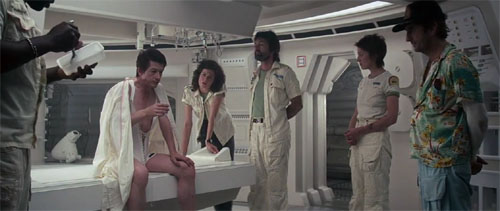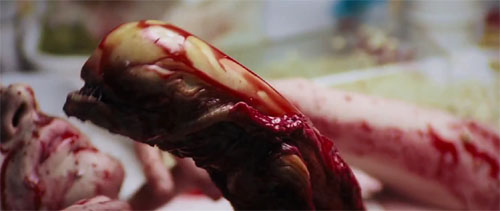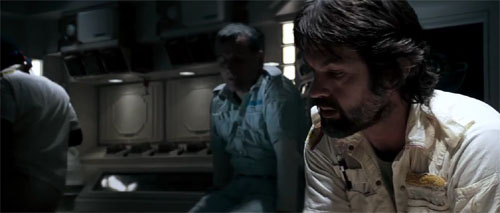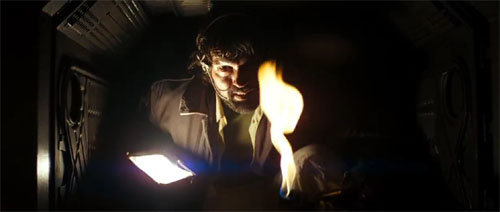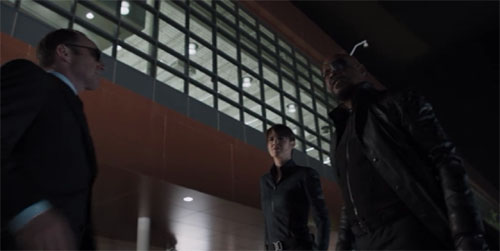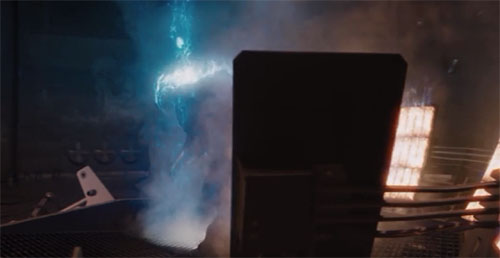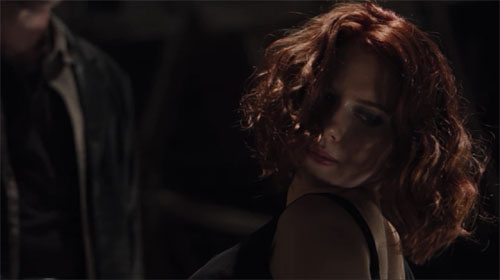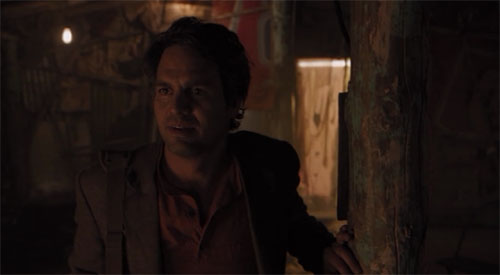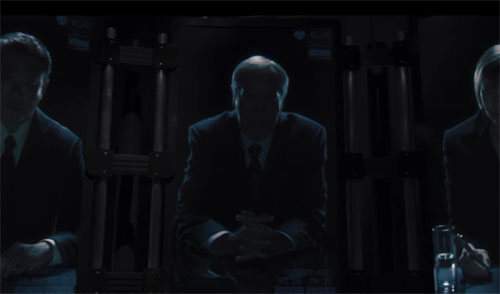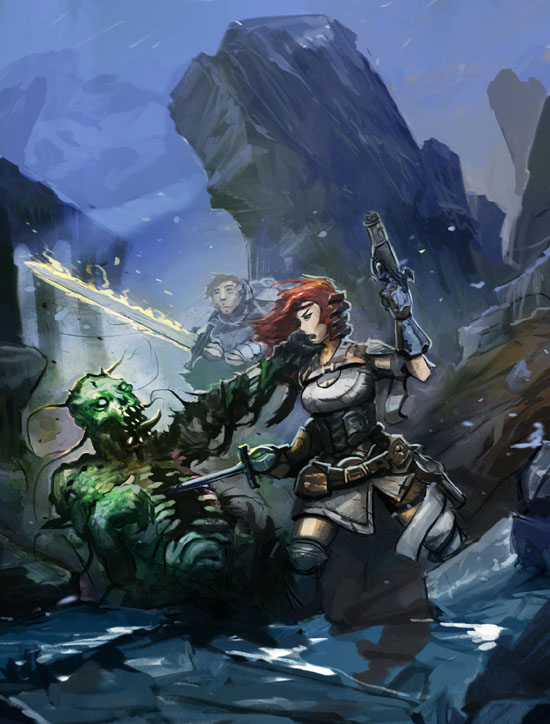As I mentioned in the first installment of Film Banging the problem with using films as fodder for talking about RPG techniques is that it can be very easy for the linear nature of the medium to leak into the discussion. We know that Luke Skywalker is “destined” to go to the Death Star and blow it up because we’ve seen the movie. So if I talk about Obi-Wan saying that he wants Luke to join him on Alderaan as an example of what a scenario hook looks like, am I saying that every scenario hook needs to be a railroad?
So, as before, we’re going to pretend that the outcome of each scene hasn’t been predetermined. And I’ll try to emphasize that by discussing the different outcomes each scene might have.
We started our analysis of The Avengers at the beginning of the film. But it turns out that the beginning of most films look a lot alike: There are a bunch of color scenes setting up the exposition of the film with an occasional conflict scene tossed in to keep things lively. So for Alien we’re going to skip to the middle of the film.
SCENE 1 – BANG: “The communication panel pings. It’s Ash. He says there’s been a change in Kane’s condition: He’s awake.”
The agenda is: What are we going to do about Kane?
(Or, alternatively, the GM can think of it as: Are they going to figure out there’s something wrong with Kane before an alien bursts out of his chest?)
The film actually visits this agenda over and over again through a sequence of scenes following the facehugger latching onto Kane, starting with Ripley facing a choice about leaving the airlock sealed to prevent contamination. (In an RPG the first such scene would probably be the exploration party deciding whether or not to bring him back to the ship at all, but the film skips that decision point.)
You see this technique used frequently in horror stories: When the audience knows (or suspects) the doom that’s coming, the repeated opportunities for the characters to avoid their doom are suspenseful. For the characters, these opportunities are frequently powerful crucibles in their own right and can become points of strong contention after the fact. (“If only you had fucking listened to me, Bobby wouldn’t be dead!”)
So, for example, in this scene there are multiple moments in which a different choice might have resulted in a different outcome: Kane is having problems with his memory… maybe we should give him a medical scan (which would have revealed the creature incubating inside of him)? We’re supposed to go straight to cryo (in which case, Kane would have gotten frozen before the creature burst out of him)… but we’re all hungry and cryo will go easier if we’ve got some food to burn.
This technique can be tougher to use in an RPG because PCs tend to have a more ruthless survival instinct than literary characters. “Nuke it from orbit, it’s the only way to be sure” is their motto. So if you want to offer them repeated opportunities to “escape their doom”, then you need to spike the pot a bit: Make it cost (and cost dearly) to pursue the safer or more expedient course.
SCENE 2 – BANG: “Kane’s chest explodes in a fountain of blood.”
The agenda is: How will the crew react to Kane’s death?
This bang kinda speaks for itself. It’s one of the most famous bangs in film history.
The agenda, you’ll note, is not particularly compelling. (A strong and memorable bang can make up for a pedestrian agenda.) But the other interesting thing about this scene is that it’s about color and not conflict: The alien kills Kane (who I’m assuming is a feature, not a lead), but the only moment that even comes close to conflict is Ash insisting that they don’t fight the creature.
This scene doesn’t end in the dining room: That’s just where the bang is located. The scene (and its agenda) continues through the funeral and the ensuing ordnance discussion (where we’re introduced to the electric prod and the motion detector). We can imagine this scene ending when somebody at the table says, “Okay. Enough talk. We’re leaving the bridge and going bug hunting.” That signals the GM that it’s time to move on to the next scene.
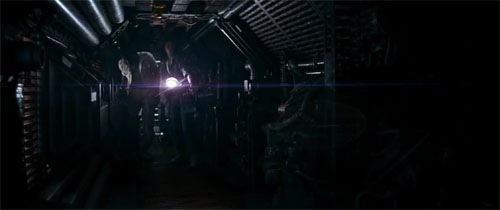
SCENE 3 – BANG: “You can’t understand it. All the power on Deck 3 is out. It’s a black pit down there.”
The agenda is: Can they catch the xenomorph?
Note that the “GM” doesn’t waste time describing a bunch of time in which the search turns up nothing of interest. Instead, he cuts straight to the moment where a discovery has been made. (At a gaming table, we could imagine a Search check being made. Alternatively, a GM could easily ask the PCs what their search pattern is going to be and use that to determine what anomaly they encounter first.)
There’s actually a whole sequence of bangs through this sequence:
- “The motion sensor triggers. There’s something behind the spacesuits.”
- “You find the shed skin of the xenomorph.”
- “You spot the cat hiding behind some crates. It hisses loudly. You realize it’s not looking at you any more. It’s looking over your shoulder.”
- “Water is dripping down on you from the water tanks… Wait. That’s not water. It’s red. It’s viscous. It’s blood.”
- “You hear Brett screaming.”
I mentioned in Film Banging: The Avengers that Whedon used escalating sequences of bangs. Scott and O’Bannon use the same principle here to structure a compelling search sequence.
Consider how similar lessons can be applied to your dungeon design: What’s the bang for each room/encounter? How can the PCs move towards the bang? How can you move play efficiently to the next bang instead of dwelling on material that isn’t compelling or meaningful?
SCENE 4 – BANG: “There’s only one possibility. The alien is moving through the air ducts.”
The agenda is: What’s the new strategy?
‘Cause the old one sure as hell didn’t work. In the movie, this scene gives us the idea of sealing the exits from the air shaft and driving the alien into the airlock. It also gives us flamethrowers.
In an RPG scenario we could imagine this scene going a different way: Maybe the PCs decide to make a break for the shuttle. Or they have someone cover the second entrance to the air shaft instead of sealing it. Or multiple people enter the air duct.
SCENE 5 – BANG: “Dallas! I’ve got a second trace on the motion sensor. It’s in there with you.”
The agenda is: Can Dallas survive?
Finally, we have a pretty straightforward conflict scene. It takes the somewhat unusual form of consisting almost entirely of opposed Stealth and Perception checks. (By the time the xenomorph catches up to Dallas in the air shaft, it’s already too late for him.)
If I was running this scenario at the table, I might embrace the structure of the scene by having Lambert’s player go into another room. She can get useful information from the motion tracker (which I’ll provide by sending her text messages on her cell phone), but she’ll have to shout it. Meanwhile, there’s an egg-timer and Dallas’ player only has 30 seconds to figure out which direction to go next based on his own Perception checks and whatever Lambert is screaming at him. (This is an example of a metagame special effect. But I digress.)
Go to : The Art of Pacing – Film Banging: The Matrix

